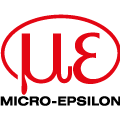
Posted to News on 19th Nov 2007, 22:13
Specialist cables for factory and process automation
Belden reports that its cables are being widely adopted by industrial users for factory floor automation and process industry applications. The company offers a range of process automation (PA) cables for use in instrumentation, regulation and control technologies. Profibus PA technology provides for safe transmission of data and power, enabling users to expand the possibilities of a state-of-the-art control system.
At a recent Press Briefing, Charles Ingham, Sales Director for Belden EMEA, provided an overview of the latest Belden products for industrial automation: "Belden cables have been widely installed in many key sectors, such as the oil and gas industry, chemical processing, paper and pulp manufacturing and processing; and the metals industry.
"Process Automation is used extensively by heavy industries who manufacture in continuous process. Over the years, pneumatic systems have migrated to 4-20mA systems and proprietary solutions; today they use open digital systems. The Belden range of Process Automation cables offers cost, quality and performance benefits to everyone in the value chain - manufacturers, global companies with assets in multiple countries, main instrument builders (MIVs) and EPC contractors.
"Our customers are finding that they are benefiting from reduced maintenance costs, improved maintenance efficiency and a reduction in equipment life cycle costs. The most significant potential to save money on is preventive instrument maintenance, which is also the largest post on the costs side. Studies show that 63 per cent of instrument maintenance labour results in no action taken; a large waste of resources."
Process control
For industrial process control instruments, analogue 4-20mA and 10-50mA current loops are commonly used for analogue signalling, with 4mA representing the lowest end of the range and 20mA the highest. The key advantages of the current loop are that the accuracy of the signal is not affected by voltage drop in the interconnecting wiring, and that the loop can supply operating power to the device. Even if there is significant electrical resistance in the line, the current loop transmitter will maintain the proper current, up to its maximum voltage capability. The live-zero represented by 4mA allows the receiving instrument to detect some failures of the loop, and also allows transmitter devices to be powered by the same current loop (called two-wire transmitters).
Such instruments are used to measure pressure, temperature, flow, pH or other process variables. A current loop can also be used to control a valve positioner or other output actuator. An analogue current loop can be converted to a voltage input with a precision resistor. Since input terminals of instruments may have one side of the current loop input tied to the chassis ground (earth), analogue isolators may be required when connecting several devices in series.
Discrete automation
Ingham continues: "In addition to process control, industrial automation also encompasses discrete automation or factory floor automation in facilities where the production process is not continuous but in batches; typical examples are automotive production and assembly plants, and pharmaceutical and laboratory facilities.
"In these circumstances, modern open bus systems allow real-time processing through having distributed intelligence in the field. Key discrete automation protocols include Profibus, DeviceNet, ControlNet, Modbus, Interbus-S, Melsecnet and CC-Link. Each Protocol has its own characteristics and defines a specific cable type for communication."
Belden says it has the right cables to provide the right signal transmission characteristics for industrial applications. Furthermore, the company is continuing to invest in developing new products, some of the latest examples of which are as follows:
7000x series Profibus PA cables for process automation
The Belden 7000x series is aimed at process automation systems designed by Siemens for the processing industry. The range includes 2 PVC versions, an LSNH version and an LSNH/SWA (steel wire armoured) version.
These cables meet all requirements of IEC 61158-2, Fieldbus for use in industrial control systems, and are suitable for use in hazardous areas zone 1 and 2, group II, as defined in IEC 60079-14 or class I or class II division 2 as per NEC 501.4 (b) or NEC 502.4 (b). All versions are oil resistant and are suitable for use in demanding industrial environments. Other jacket options such as PUR or Teflon or different armouring options such as steel wire braid are available upon request.
LSNH and LSNH/armoured DeviceNet cables
Belden already offers one of the widest selections of DeviceBus cables available on the market today. However, the new halogen-free versions of its DeviceBus cables are suitable for use in ODVA DeviceNet networks and meet IEC 60332-3-24 standards. The LSNH versions may be used for indoor and outdoor applications and at temperatures as low as -45degC. For enhanced mechanical protection and/or rodent protection, steel wire armoured versions are available, as are other jacket options such as PUR or Teflon or different armouring options such as steel wire braid.
Circuit integrity PLTC cables complying to UL and IEC standards
New Belden 300V instrumentation cables meet the UL 2196 and IEC 60331 standards for circuit integrity. This is very important in the process industries to prevent loss of assets in the event of fire. These cables can be used in the emergency shutdown (ESD) system as well as in the gas/fire detection systems.
The standards prescribe the minimum time that the cables will have to withstand elevated temperatures, UL 2196 two-hour rapid temperature rise fire starting at 538degC (1000degF) to 1010degC (1850degF) and IEC 60331 calls for a three-hour burn test at 750degC during which time the insulation is not allowed to fail.
These cables are halogen-free as standard and are suitable for indoor and outdoor applications. In addition, they can be used in hazardous areas zone 1 and 2, group II, as defined in IEC 60079-14 or class I or class II division 2 as per NEC 501.4 (b) or NEC 502.4 (b).
All these new products complement the full range of Belden Profibus PA cables and halogen-free DeviceNet cables.
Want the latest machine building news straight to your inbox? Become a MachineBuilding member for free today >>

















